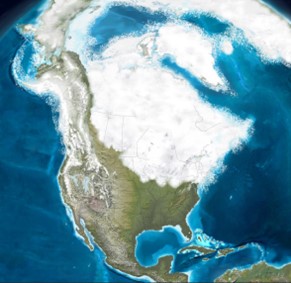Simple and intuitive model illustrates how climate cycles are influenced by our planet’s orbit.
From the Journal: Chaos

https://www.flickr.com/photos/noaa_glerl/8740576431
WASHINGTON, March 7, 2023 – Proxy data – indirect records of the Earth’s climate found in unlikely places like coral, pollen, trees, and sediments – show interesting oscillations approximately every 100,000 years starting about 1 million years ago. Strong changes in global ice volume, sea level, carbon dioxide concentration, and surface temperature indicate cycles of a long, slow transition to a glacial period and an abrupt switch to a warm and short interglacial period.
Milutin Milankovitch hypothesized that the timing of these cycles was controlled by the orbital parameters of the Earth, including the shape of its path around the sun and the tilt of the planet. A slightly closer orbit or more tilted planet could create a small increase in solar radiation and a feedback loop that leads to massive changes in climate. This idea suggests that there may be some predictability in the climate, a notoriously complex system.
In Chaos, by AIP Publishing, Stefano Pierini of Parthenope University of Naples proposed a new paradigm to simplify the verification of the Milankovitch hypothesis.
“The main motivation behind this study was the wish to characterize and illustrate the Milankovitch hypothesis in a simple, elegant, and intuitive way,” Pierini said.
Many models suggest that Milankovitch is correct; however, such methods are often detailed and study specific. They incorporate climate feedback loops – for example, increased ice cover reflects more radiation back into space, leading to further cooling and more ice cover – as threshold crossing rules. This means that an abrupt jump in climate only occurs once a parameter reaches a given tipping point.
Pierini’s “deterministic excitation paradigm” combines the physics concepts of relaxation oscillation and excitability to link Earth’s orbital parameters and the glacial cycles in a more generic way. The relaxation oscillation component describes how the climate slowly returns to its original glacier state after it is disturbed. At that point, the excitability piece of the model captures the external orbital changes and triggers the next glacial cycle.
By using his own threshold crossing rules and adopting a classical energy-balance model, Pierini obtained correct and robust timing of the most recent glacial cycles.
“The application of the deterministic excitation paradigm in the present basic formulation can explain the timing of the last four glacial terminations,” he said. “Extending the same analysis to the whole Pleistocene will be the subject of a future investigation.”
Pierini believes similar methods could be used in other fields of nonlinear science and in connection with other climate phenomena.
###
Article Title
The deterministic excitation paradigm and the late Pleistocene glacial terminations
Authors
Stefano Pierini
Author Affiliations
Parthenope University of Naples
